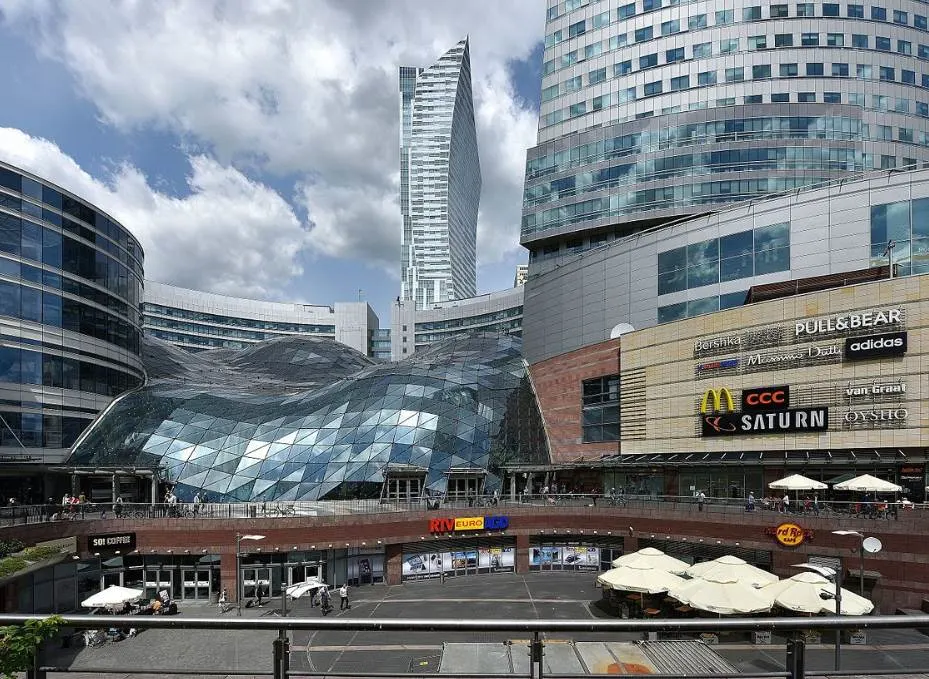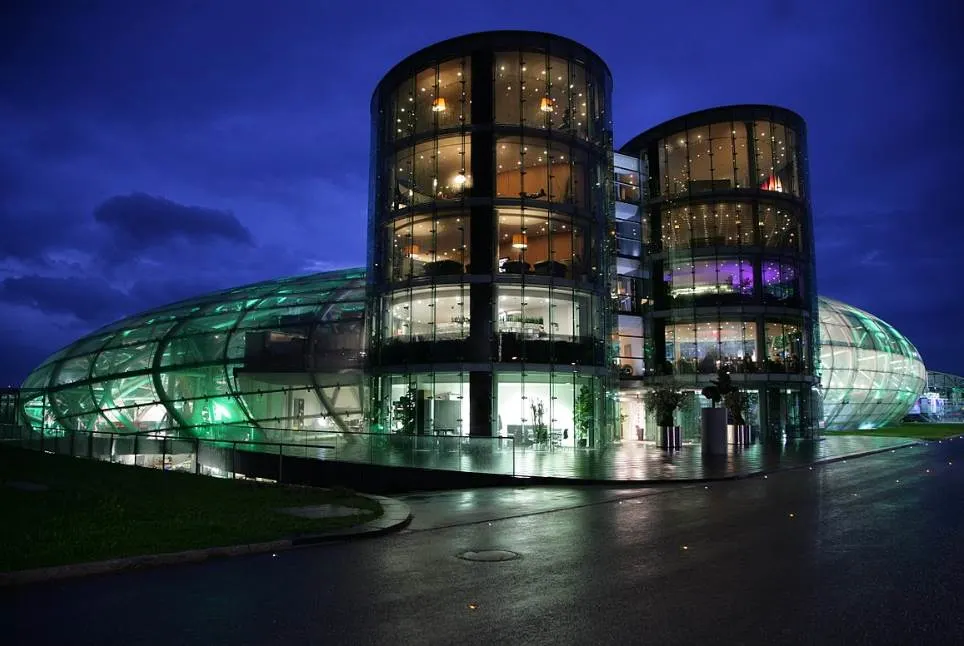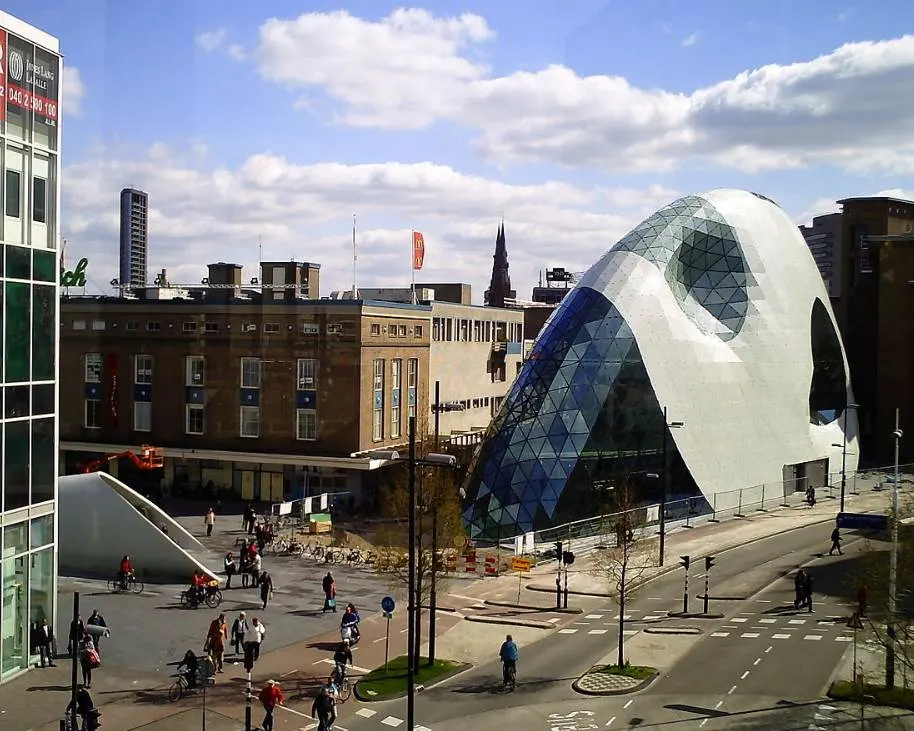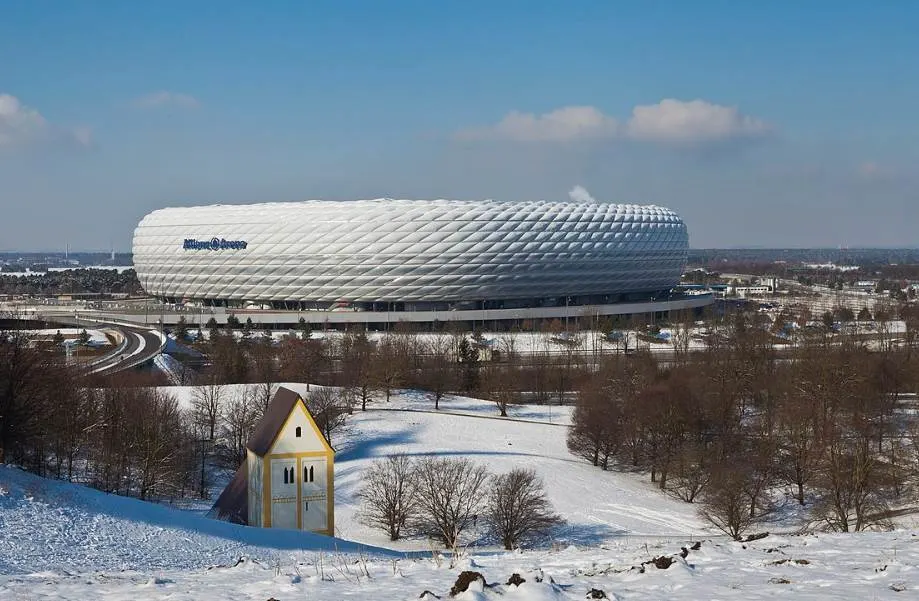When an American architect started experimenting with metaball graphical software, he coined the term Blob Architecture to describe what he discovered.
Although Greg Lynn was the first to use the term to describe this new architectural style, the word “Blobitecture” didn’t emerge for the first time until 2002.
The name is a reference to the cellular organisms which can alter their shapes. These are referred to by biologists as “Amoeba.”
Blobitecture buildings can not exist without the help of design software unless we look at the building from a purely aesthetic point of view. This doesn’t mean, however, that every peculiar-looking building can be described as a blob building.
Regardless of the exact definition, several buildings completed way before the term was used meet the criteria and fall within the spectrum of Blob architecture.
Below, you’ll find a list of some of the most famous Blobitecture buildings from all around the world.
1. Eden Project – Cornwall, United Kingdom
The Eden Project is a tourist attraction in Cornwall, a county in South West England, that consist of two huge domes. These domes emulate natural biomes that allow thousands of exotic plant species to grow here. The two biomes are tropical rainforest and Mediterranean climates.
The geodesic tubular steel domes are amazing examples of blob architecture, especially since they were constructed inside of a reclaimed China clay pit. A botanical garden was established around these domes. The tropical dome is the largest of the stow with a height of 55 meters (180 feet) high and a total area of 1.56 hectares (3.9 acres).

2. Kunsthaus – Graz, Austria
The Kunsthaus is an astonishing Blob building in Austria. It’s located in the heart of Graz, the second-largest city in Austria after Vienna and the capital city of the Austrian state of Styria. The building was completed in 2003 as the centerpiece of the European Capital of Culture celebrations that year.

The Blob building was designed by architects Colin Fournier and Sir Peter Cook and has become one of the most significant architectural highlights in the City. Today, the structure is used for contemporary art exhibitions featuring art that was produced after the 1960s.

3. Sage Gateshead – Gateshead, United Kingdom
Sage Gateshead is an incredible music venue and musical education facility in Gateshead, a city on the opposite bank of Newcastle in northern England. It’s located on the banks of the Tyne River, just east of the iconic Tyne Bridge in the city and just south of the Newcastle City Center.
The building was completed in 2004 at a cost of £70 million and its remarkable Blobitecture design has turned it into one of the most iconic buildings in England. The Gateshead Millenium Bridge is located just east of this stunning structure and was equally part of the Gateshead Quays development project.

4. Montreal Biosphere – Montreal, Canada
The Montreal Biosphere is commonly referred to as simply “The Biosphere” and is one of the Blobitecture buildings that qualifies to be defined as such even though it was completed way back in 1967. It serves as a museum that was dedicated to the environment in Montreal, the second-most populous city in Canada.
The geodesic dome of the museum was designed by the American architect Buckminster Fuller (1895-1983), a man who revolutionized architecture in many ways. The building was constructed as part of Expo 67, a world fair that was held in Montreal in 1967. It served as the pavilion of the United States during this event.

5. Golden Terraces – Warsaw, Poland
The Golden Terraces or “Złote Tarasy” is a multi-purpose entertainment complex in Warsaw, the capital and largest city in Poland. It’s located right next to the Warsaw Central Railway Station and has become one of the most popular tourist attractions in the city since it opened its doors in 2007.
The most remarkable architectural feature is the blob architecture of the central courtyard, an area used for concerts and other events. This transparent diagrid roof was designed by a Viennese company called Waagner Biro, a company that also designed the new courtyard of the British Museum in London.

6. Hangar-7 – Salzburg, Austria
Hangar-7 is a remarkable building in Salzburg, the 4th-largest city in Austria. The complex is owned by Redbull founder Dietrich Mateschitz, an Austrian billionaire who transformed the structure into an exhibition space for airplanes, helicopters, and Formula One racing cars.
The airfoil-shaped building is another remarkable project of the Viennese company Waagner-Biro and was completed in 2003. The 1,200 tonnes of steel and the 7,000 square meters (75,000 square feet) of glass that covers the building transform it into a magnificent spectacle, especially at night.

7. The Blob – Eindhoven, Netherlands
The Blob is a fascinating building in the historical heart of Eindhoven, a major city in the southern part of the Netherlands. It’s the centerpiece of the “18 September Square” and its remarkable Blob architecture really makes it stand out among the historic buildings in this area.
The building stands 25 meters (82 feet) tall and was designed by Italian architect Massimiliano Fuksas. It’s completely covered in glass and steel and features the typical organic characteristics that define Blobitecture. The structure serves as the entrance of a shopping mall called “The Admirant.”

8. Matrimandir – Auroville, India
The Matrimandir translates from Sanskrit to the “Temple of the Mother.” It’s located in Auroville, an experimental township in the Indian state of Tamil Nadu. The remarkable building in India has a special significance to practitioners of Integral yoga.
The foundation stone of the building was laid in 1971 but it wasn’t completed until May 200, about 37 years later. It’s another structure in our list of Blobitecture buildings that consists of a geodesic dome. The twist is that it’s completely covered by golden discs that reflect the sunlight.

9. Allianz Arena – Munich, Germany
The Allianz Arena is an association football stadium in Munich, the capital city of the Free State of Bavaria in the southern part of Germany. It’s the magnificent home of the most successful german football club in history, Bayern Munich, and has been since its completion in 2005.
The organic exterior of the stadium is covered with inflated ETFE plastic panels. It was the first stadium in the world that could change its exterior color scheme, a feature needed since another local football club 1860 Munich shared the stadium in the first years. The Allianz Arena is widely considered to be one of the most amazing stadiums in Europe.

10. Selfridges Building – Birmingham, United Kingdom
The Selfridges Building is one of the most amazing buildings in Birmingham, the second-largest city in the United Kingdom after London. The building is one of the main features of the Bullring shopping area in central Birmingham and houses the popular Selfridges Department Store.
The building was completed in 2003 at a cost of £60 million. It features a steel framework with sprayed concrete and is clad with aluminum discs. It has become one of the ultimate architectural highlights in the city with one of the most distinctive curved façades in the UK.

